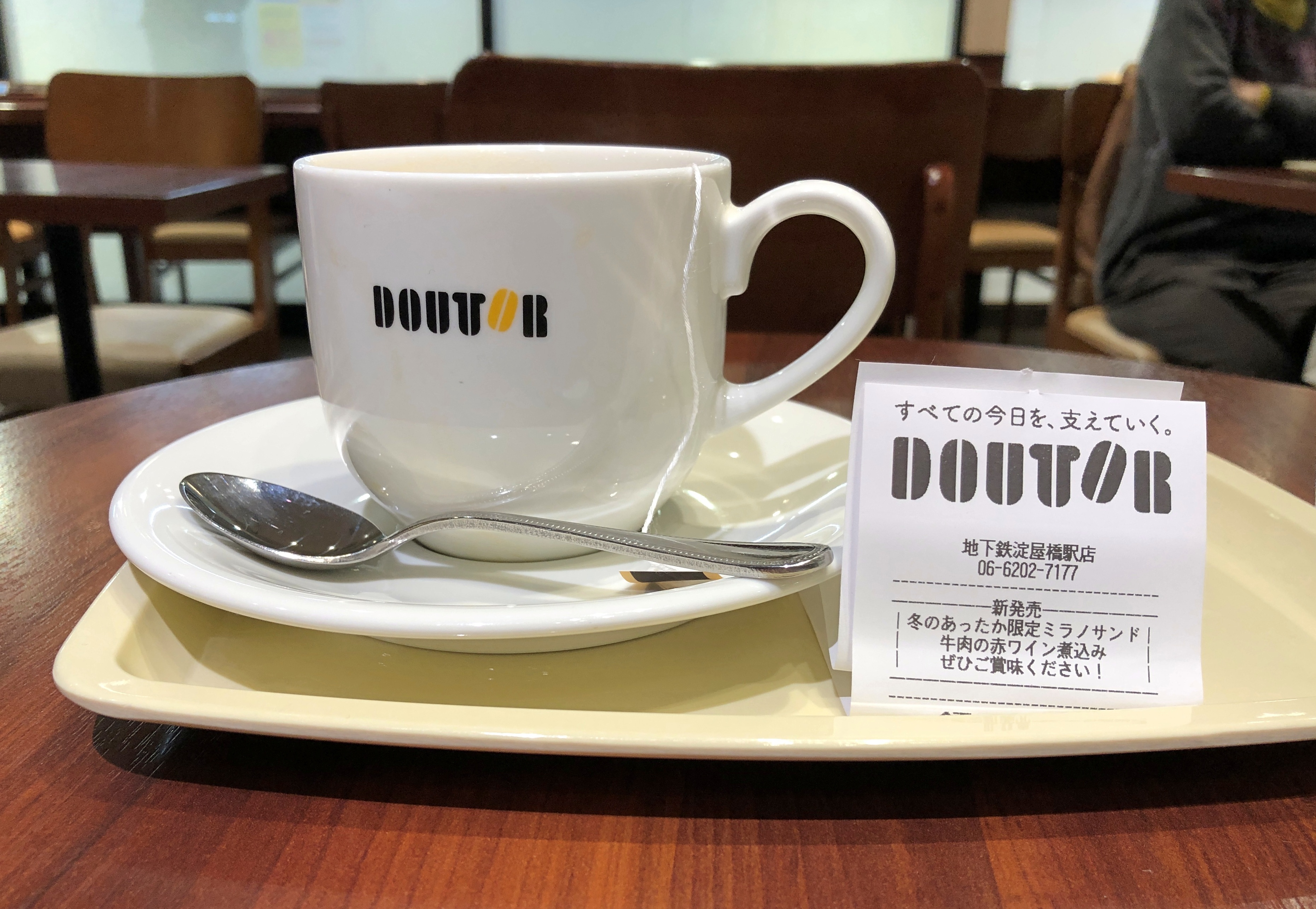Take a pork cutlet, a nice thin one but not too thin, dredge a bit in flour, dip in beaten egg, coat with panko, and deep fry in light oil. Serve sliced so that the pieces are easier to manage with chopsticks, and with a brown Worcestershire-y sauce (but better, I think). Add a bed of lettuce, and sides of rice, miso and Japanese pickles.
A modest dish, but there’s nothing quite like a good tonkatsu. It is an example of salaryman food. Of course, other people eat it – a lot in my case, since the happy day sometime in 1990 when I had it for the first time. But in the lunchtime domain of male office workers in dense Osaka, the Kitchen of Japan, tonkatsu is a familiar regular (and in other parts of the country, too). They are little works of fragrant and delicious art whose purpose is to be eaten for the pocket money that their wives allow them for lunches.
Naturally, I sought it out during my recent days in Japan. This one is before the application of sauce. It’s the legacy of a Japanese adaptation of a European, specifically French dish, back in the 19th century. A detail from the Meiji era.
Another popular adaptation in Japan, spotted among the office towers near Osaka Castle. Doughnuts have long had a home in Japan.
Yes. It was time.
Another day, during a solo wander in the streets near Midosuji Blvd., I took rest at a small coffee shop, part of a large chain.
Doutor Coffee has some 1,200 locations in East Asia, with a concentration of 900 or so in Japan and others in Taiwan, Malaysia and Singapore. I expect most of them are franchised locations, and many are along underground pedestrian ways near subways or train stations. Mine was so close to a subway station entrance, you could hear the soft beeping of the electronic tickets and the slightly louder clank of the turnstiles if you decided to pay attention.
Mostly, the place was quiet, with people setting themselves in front of their laptops or fiddling with their phones. I joined the laptop users, pecking out emails or parts of whatever article was due next.
Considering the strong dollar (in February, anyway), the tab for milk tea and a warm chocolate croissant came in less than double digits in US dollar terms. But a refreshing beverage and a tasty snack are only part of the deal: you’re also renting a place to sit.
But not a place to smoke anymore. I was a little surprised, considering how consistently tobacco smoke used to linger, or sometimes billow and swirl, in public spaces in Japan 30+ years ago. That shift oddly reminded me of visits to Preservation Hall in 1981 and 1989 (minus the jazz, of course). The first time, the jazzmen played in a room lightly clouded with smoke. Eight years later, the air was clear.